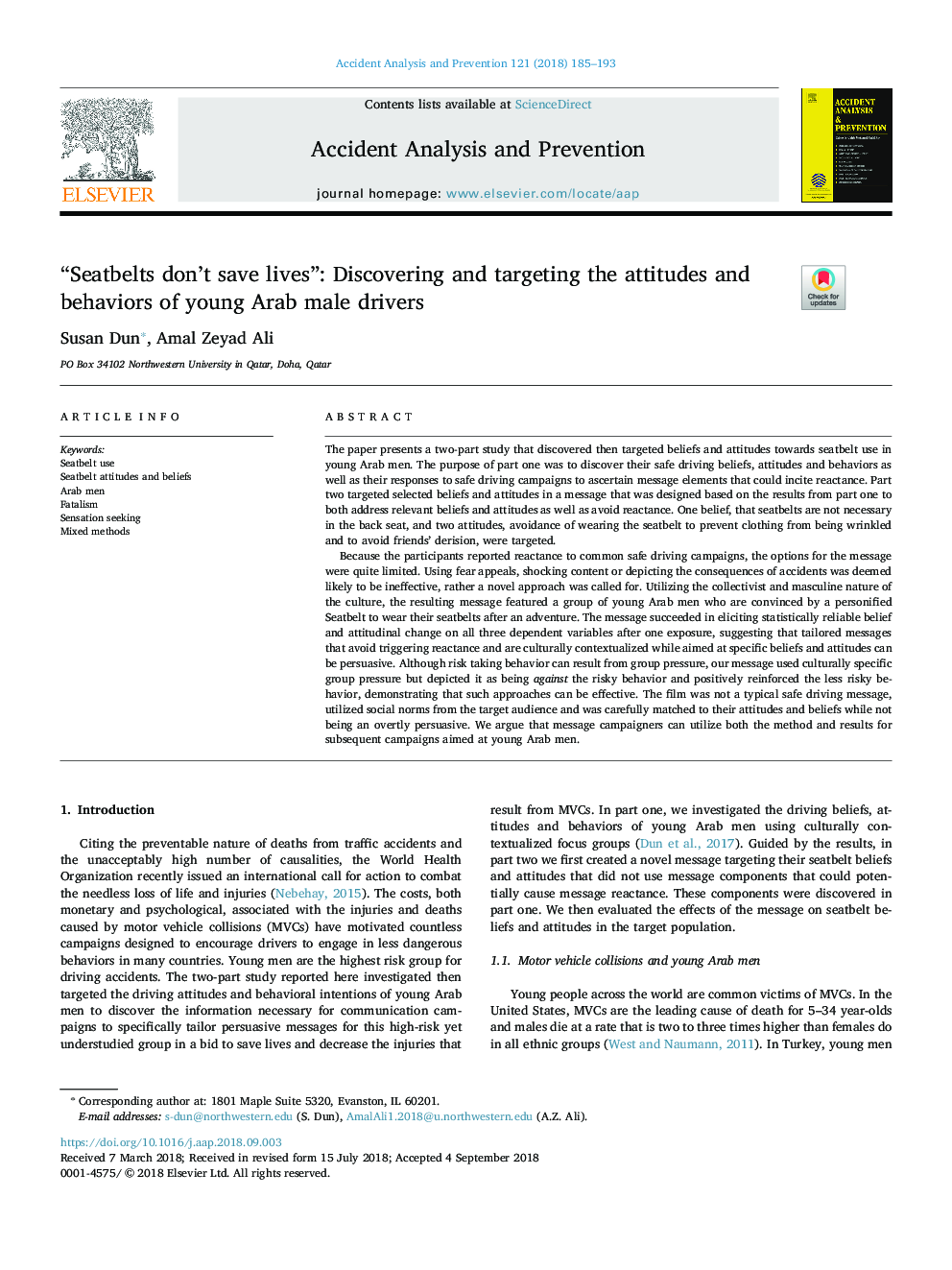| Article ID | Journal | Published Year | Pages | File Type |
|---|---|---|---|---|
| 11028823 | Accident Analysis & Prevention | 2018 | 9 Pages |
Abstract
Because the participants reported reactance to common safe driving campaigns, the options for the message were quite limited. Using fear appeals, shocking content or depicting the consequences of accidents was deemed likely to be ineffective, rather a novel approach was called for. Utilizing the collectivist and masculine nature of the culture, the resulting message featured a group of young Arab men who are convinced by a personified Seatbelt to wear their seatbelts after an adventure. The message succeeded in eliciting statistically reliable belief and attitudinal change on all three dependent variables after one exposure, suggesting that tailored messages that avoid triggering reactance and are culturally contextualized while aimed at specific beliefs and attitudes can be persuasive. Although risk taking behavior can result from group pressure, our message used culturally specific group pressure but depicted it as being against the risky behavior and positively reinforced the less risky behavior, demonstrating that such approaches can be effective. The film was not a typical safe driving message, utilized social norms from the target audience and was carefully matched to their attitudes and beliefs while not being an overtly persuasive. We argue that message campaigners can utilize both the method and results for subsequent campaigns aimed at young Arab men.
Related Topics
Physical Sciences and Engineering
Chemical Engineering
Chemical Health and Safety
Authors
Susan Dun, Amal Zeyad Ali,
